
“When I stop drinking tea and eating bread and butter I say, ‘I’ve had enough.’ But when I stop reading poems or novels I say, ‘No more of that, no more of that.'” — Chekhov

“When I stop drinking tea and eating bread and butter I say, ‘I’ve had enough.’ But when I stop reading poems or novels I say, ‘No more of that, no more of that.'” — Chekhov
In the church of St. Mary Magdalen in Mulbarton, Norfolk, is mounted a copper diptych, a memorial to resident Sarah Scargill, who died in 1680. The left panel remembers Scargill as “a Person of unimitable Devotion, of a most nice and tender Conscience, of sweet Behaviour, and in all Things so faithfull a Servant of God, that I dare contest the Divine Goodness to have rewarded her.” The right panel reads:
Dear Love! one feather’d Minute, and I come,
To lye down in thy dark retiring Room,
And mingle Dust with thine, that we may have,
As when alive, one Bed, so dead, one Grave,
And may my Soule teare through the vaulted Sky,
To be with Thine, to all Eternity.
Oh! how our Bloodless Forms will that Day greet,
With Love Divine, when we again shall meet,
Devest of all contagion of the Flesh,
Full fill’d with ever lasting Joys, and fresh,
In Heaven above, (and’t may be) cast an Eye,
How far Elyzium doth beneath us lye.
Dear! I dis-body and away,
More swift than Wind,
Or flying Hind,
I come, I come, away.
Daniel Scargill.
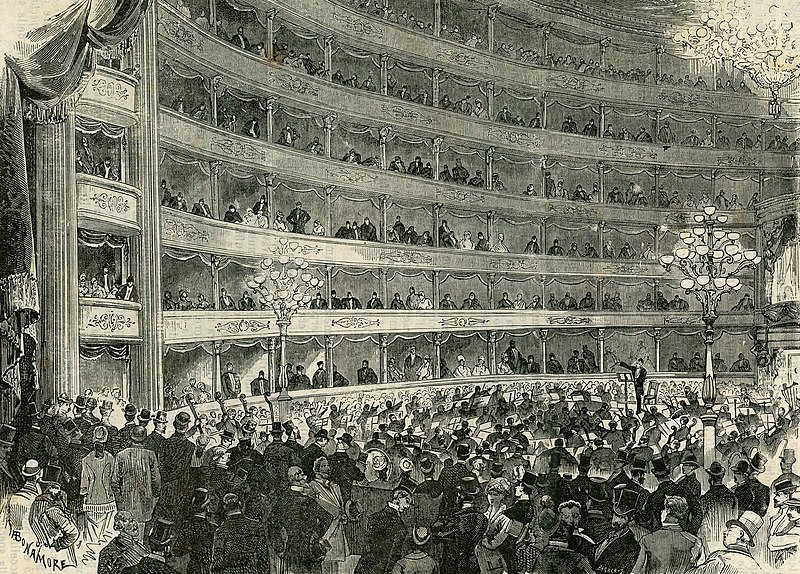
Two evenings spent at La Scala, Milan, one of them standing up, the other sitting down. On the first evening, I was continuously conscious of the existence of the spectators who were seated. On the second evening, I was completely unconscious of the existence of the spectators who were standing up (and of those who were seated also).
— Simone Weil, quoted in W.H. Auden, A Certain World, 1970
Describing this fish (Holocanthus Alternaus), which was caught off Zanzibar, a correspondent of the ‘Times of India’ wrote: ‘… On the one side of the tail are the words, La-ilaha-illa Allah’ — ‘There is no God but God.’ On the other side, ‘Shan Allah’ — ‘God’s Work,’ or ‘An Act of God.’ … Many of our readers who know Arabic will be able to see for themselves from this untouched photograph that the fish is a devout Moslem.’ We have shown the photographs to an expert in this country, who informs us that the letters are certainly intended to represent Arabic characters, but that there is nothing sufficiently distinguishable to enable it to be said that they mean what they are alleged to mean. A further opinion is expressed that the ‘inscriptions’ may not be genuine.
— Illustrated London News, Dec. 28, 1929
Palindromes submitted by correspondent Henry Campkin to Notes and Queries in 1873:
A milksop jilted by his lass, or wandering in his wits,
Might murmer STIFF, O DAIRYMAN, IN A MYRIAD OF FITS!
A limner, by Photography dead beat in competition,
Thus grumbled: NO IT IS OPPOSED, ART SEES TRADE’S OPPOSITION!
A nonsense-loving nephew might his soldier-uncle dun,
With NOW STOP, MAJOR GENERAL, ARE NEGRO JAM POTS WON?
A supercilious grocer, if inclined that way, might snub
A child with, BUT RAGUSA STORE, BABE, ROTS A SUGAR TUB!
Thy sceptre, Alexander, is a fortress, cried Hephaestion:
Great A. said, NO, IT’S A BAR OF GOLD, A BAD LOG FOR A BASTION!
A timid creature fearing rodents — mice and such small fry —
STOP, SYRIAN, I START AT RATS IN AIRY SPOTS, might cry.
A simple soul, whose wants are few, might say, with hearty zest,
DESSERTS I DESIRE NOT, SO LONG NO LOST ONE RISE DISTRESSED.
A stern Canadian parent might — in earnest, not in fun —
Exclaim, NO SOT NOR OTTAWA LAW AT TORONTO, SON!
A crazy dentist might declare, as something strange or new,
That PAGET SAW AN IRISH TOOTH, SIR, IN A WASTE GAP! True!
A surly student, hating sweets, might answer with élan;
NAME TARTS, NO, MEDIEVAL SLAVE, I DEMONSTRATE MAN!
He who in Nature’s bitters, findeth sweet food every day,
EUREKA! TILL I PULL UP ILL I TAKE RUE, well might say.
“Dr. Johnson has somewhere said that there are many things difficult to accomplish, and which, when accomplished, are not worth the labour expended upon them. Sage correspondents of ‘N. & Q.,’ after scanning the above, will doubtless concur in opinion with the sententious old Moralizer.”
In Eric Cross’ 1942 book The Tailor and Ansty, Irish tailor and storyteller Timothy Buckley recounts the wisdom held by the old Irish, before “the people got too bloodyful smart and educated, and let the government or anyone else do their thinking for them.” They had a way of reckoning time that advances from the lifespan of a rail, a type of small bird, to the age of the world:
A hound outlives three rails.
A horse outlives three hounds.
A jock outlives three horses.
A deer outlives three jocks.
An eagle outlives three deer.
A yew-tree outlives three eagles.
An old ridge in the ground outlives three yew-trees.
Three times the time that the sign of a ridge will be seen in the ground will be as long as from the beginning to the end of the world.
“The tailor is wildly off,” notes philosopher Robert P. Crease, “in his estimate of the age of the universe, which is unlikely to be (lifetime of the rail) × 38. Still, his point is well made that the old Irish unit system may possess certain superiorities to ours in that it was ‘reckoned on the things a man could see about him, so that, wherever he was, he had an almanac.'”
01/31/2025 UPDATE: Reader Edward White writes:
There is actually a similar calculation found in the Cosmati Pavement, in Westminster Abbey: The inscription reads
If the reader wisely considers all that is laid down, he will find here the end of the primum mobile; a hedge (lives for) three years, add dogs and horses and men, stags and ravens, eagles, enormous whales, the world: each one following triples the years of the one before.
In other words the calculation is:
A hedge lives 3 years
A dog lives for 3 hedges (i.e. 9 years)
A man lives for 3 dogs (i.e. 27 years)
A stag lives for 3 men (i.e. 81 years)
A raven lives for 3 stags (i.e. 243 years)
An eagle lives 3 ravens (i.e. 729 years)
A whale lives 3 eagles (i.e. 2187 years)
And the world lives 3 whales (6561 years)This is the same as the Irish peasant’s calculation, in that it involves 8 rounds of tripling, but it has different terms. Schott’s Quintessential Miscellany (Bloomsbury, 2011) has a similar list of calculations on page 104. They are quoted below in full:
Flemish folklore gave this estimate of animal life-spans, premised upon the belief that a town (or enclosure) lasted just three years:
A TOWN lives three YEARS,
A DOG lives three TOWNS,
A HORSE lives three DOGS
A MAN lives three HORSES,
An ASS lives three MEN,
A WILD GOOSE lives three ASSES,
A CROW lives three WILD GEESE,
A STAG lives three CROWS
A RAVEN lives three STAGS
& the PHOENIX lives three RAVENSA German equivalent has it:
A FENCE lasts three YEARS;
A DOG lasts three FENCES;
A HORSE lasts three DOGS;
And a MAN three HORSES.Hesiod (fl.c 8th BC) wrote:
The NOISY CROW lives nine generations of MEN who die in the bloom of years; the STAG attains the age of four CROWS; the RAVEN, in its turn, equals three STAGS in length of days; while the PHOENIX lives nine RAVENS. We nymphs, fair-of-tresses, daughters of Jove the aegis-bearer, attain to the age of ten PHOENIXES.
And, Italian folklore maintained:
A DOG lasts 9 years;
A HORSE lasts 3 DOGS: 27 years;
A MAN lasts 3 HORSES: 81 years;
A CROW lasts 3 MEN: 243 years;
A DEER lasts 3 CROWS: 729 years;
An OAK lasts 3 DEER: 2,187 years.The principle was evidently very widespread across Europe.
[Here’s another translation of the Hesiod, this from Plutarch:
A screaming crow lives for nine generations
of men who have reached puberty; a deer is four crows;
the raven grows old at three deer; then the phoenix at nine ravens; and we at ten phoenixes,
we beautiful-haired nymphs, daughters of aegis-holding Zeus.]
(Thanks, Edward.)
A phonetic mnemonic for the first 32 U.S. presidents, by Edwin C. Silvey:
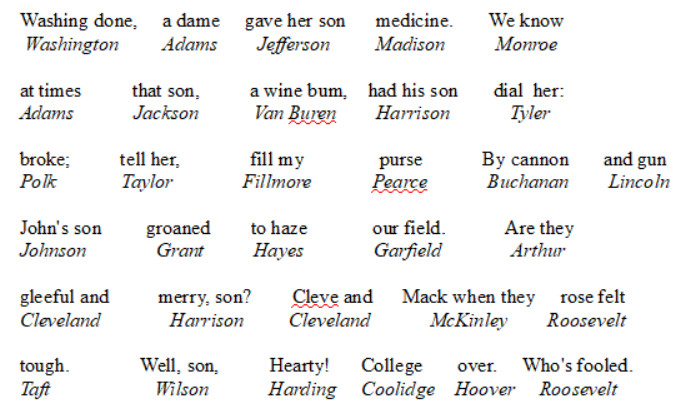
I don’t know where this first appeared, but every source I can find faithfully credits the composer.
In 1999, a letter in New Scientist noted that randomizing letters in the middle of words has little or no effect on readers’ ability to understand text. Noam D. Plum responded with a poem:
The suggetsoin taht chrilden slhuod laern how to sepll
Is a tmie-watse we ohgut to rjeect.
Sicne a jlumbe of leertts raeds pertlecfy wlel
If the frist and the lsat are crrocet.
Wehn an edtoir grembuls, “Yuor seplinlg is ntus!”
Wtih cntoempt he can braley cocneal,
Trehe is no cuase to flcnih; mkae no ifs adns or btus;
Say, “I’ts radnom, sir. Wa’hts the big dael?”
In tihs fsat-minvog wrold, waht we raed dseon’t sictk.
Olny vrey few deliats get strsseed.
If i’ts frsit or it’s lsat we may glncae at it qucik.
Woh’s got tmie to be raenidg the rset?
(Noam D. Plum, “Prepopr Splelnig,” Verbatim 32:1 [Spring 2008], 15. See Half Measures.)
In 1899 the Strand invited 13 British celebrities to draw a pig with their eyes closed.
Field Marshal Frederick Sleigh Roberts:

Judge Sir Francis Jeune:

Mary Jeune, Baroness St Helier:
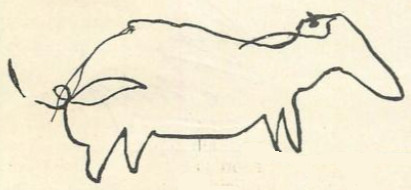
Hugh Jermyn, Bishop of Brechin:
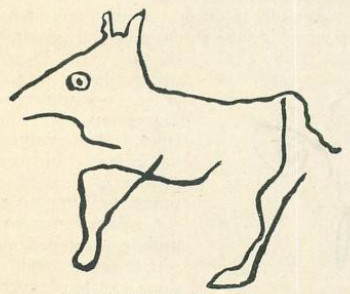
Astronomer Sir Robert Ball:

Chemist William Ramsay:
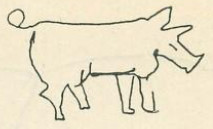
Stage actor Henry Irving:
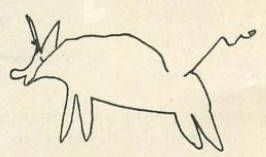
Illustrator Sir John Tenniel:

Sir Arthur Conan Doyle:

Novelist Walter Besant:

Organist Sir Frederick Bridge:

Inventor Hiram Maxim:
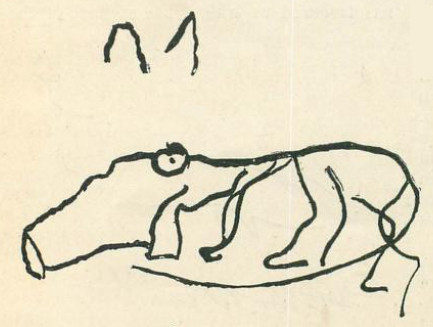
Magician Nevil Maskelyne:
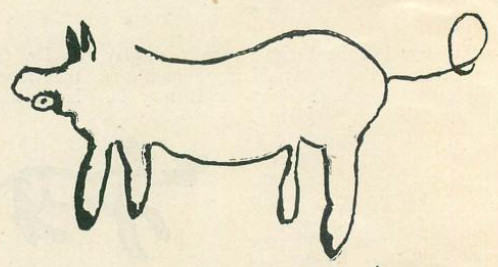
(Illustrator Harry Furniss says the trick is to use your free hand as a guide.)
A puzzle by Lewis Carroll:
Dreaming of apples on a wall,
And dreaming often, dear,
I dreamed that, if I counted all,
How many would appear?